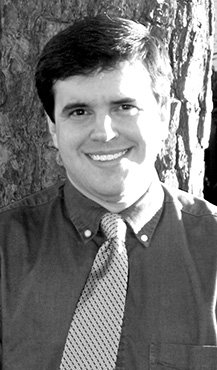A man once said that the harder he worked, the luckier he got.
For some people, that has proven true. Persistence often makes the difference between success and failure. Some people see opportunity, make plans, and charge ahead. Others let life pass them by.
Sidney Umsted saw an opportunity before many others realized it was there. His persistence led to him becoming the Father of the Smackover Oil Field, becoming the first to strike oil in one of the richest oil fields in the state in the 1920s.
Sidney Albert Umsted was born in Houston County, Texas, deep in the Piney Woods of East Texas, in 1876. His parents had moved to Texas from the small community of Chidester. However, the marriage fell apart, and Umsted’s father abandoned the family. His mother, alone and desperate to take care of her children, packed up and moved everyone back to Ouachita County.
His mother eventually remarried. Umsted grew up just over the state line near Bernice, Louisiana. He learned the lumber business and left home around 1890. He proved an adept businessman and came to own his own sawmill by 1898. In 1901, he moved to Junction City on the state line to expand his business. In 1902, he married Edna Edwards, whose family had lived in the community for some time. The couple had three daughters, including a set of twins.
By 1905, Umsted saw more opportunities for his growing sawmill business near Smackover, adjacent to the Ouachita River. Lumber was still the chief industry of the area outside agriculture, and Umsted’s sawmill soon became one of the most important employers in Smackover.
While his business prospered, Umsted was always looking for new opportunities. After the discovery of oil in northern Louisiana in 1919, Umsted realized that an important discovery could be just around the corner, and he was determined to be in the middle of the oil industry he was sure was coming.
Rumors of oil in Union County had circulated for some time. Several test holes were drilled in Union County in the years just prior to World War I. Geologists and prospectors had explored the county for some time convinced it was there. By 1920, a small well dug by Samuel Hunter had produced oil near Stephens, just a few miles from Smackover.
Umsted had no formal education in geology, but he had studied enough on the subject to know what he had to look for in his search for oil. In areas with significant oil deposits, certain tell-tale markers in the rocks and topography exist. Umsted sought out these markers and bought as much land as he could in the process, ultimately accumulating hundreds of acres.
In January 1921, Dr. Samuel Busey discovered oil in a field just west of El Dorado, within a few miles of Smackover. The gusher confirmed what many had believed for a long time. A frenzy descended on Union County as people sought out jobs and a cut of the oil fortune sure to come. Umsted kept drilling and acquiring as many oil leases and available lands as possible while the oil boom took off just down the road.
Within three months, production in the El Dorado oil fields reached 325,000 barrels as more people swooped in to work in drilling, speculation, transportation, or any one of the businesses supporting the growing work force. By June, production topped 908,000 barrels. Months more followed, and Umsted still had nothing to show. But he knew it would all pay off if he waited just a little longer.
On July 29, 1922, Umstead’s efforts paid off. He hit oil, and the Smackover oil field proved as rich as the El Dorado field. The oil craze that hit El Dorado expanded, and Smackover itself exploded. Thousands of oil prospectors swarmed to the tiny community in a matter of months. The Smackover Field covered 25,000 acres, of which Umsted controlled 3,000 acres of oil leases.
Umsted’s wells produced thousands of barrels of oil, making the man who had left home as a teenager with little more than the clothes on his back one of the richest men in the state. Standard Oil bought the site of his sawmill in 1923, creating the community of Standard-Umsted in the process. He bought a beautiful new home for his wife and daughters in Camden in 1924, which is now on the National Register of Historic Places. More people came to the area. By 1925, El Dorado and Smackover trailed only Little Rock in terms of population.
Umsted had achieved more than he had ever thought possible. But a cruel twist of fate intervened, as it sometimes does.
In late October, he went by train to Tupelo, Mississippi, on business. The journey and the meeting were uneventful. On Oct. 27, as he began the journey back, the train rounded a curve near the small community of Victoria when the cars jumped the tracks. Cars, passengers and a mass of steel plunged down a 40-foot embankment. Twenty people were killed within moments. Umsted was critically injured. A relief train brought emergency crews to the scene and rushed him and the other injured to the nearest hospital, which was in Memphis, about 30 miles distant.
Surgeons stabilized his condition, but the damage was too severe. He died one week later in a Memphis hospital. His distraught family brought the body home, burying him in Camden.
Dr. Ken Bridges is a professor of history and geography at South Arkansas Community College in El Dorado and a resident historian for the South Arkansas Historical Preservation Society. Bridges can be reached by email at [email protected].
